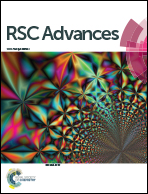Enhancement of compressive strength and cytocompatibility using apatite coated hexagonal mesoporous silica/poly(lactic acid-glycolic acid) microsphere scaffolds for bone tissue engineering
Abstract
In this study, hexagonal mesoporous silica (HMS) was composited with poly(lactic acid-glycolic acid) (PLGA) to enhance the compressive strength of pure PLGA microsphere scaffolds. The compressive strength of the HMS/PLGA composite scaffolds was significantly higher than that of pure PLGA scaffolds, which was more suitable for bone repair. However, the proliferation of mouse mesenchymal stem cells (MSCs) cultured on HMS/PLGA was inhibited when the HMS content was high. To promote the cytocompatibility of HMS/PLGA scaffolds, apatite were deposited on the scaffold's surface by an in vitro biomineralization process. After biomineralization, the cytocompatibility of mineralized scaffolds was significantly improved and without cytotoxicity. And the compressive strength of the mineralized scaffolds was close to that of the original scaffolds. Considering the suitable compressive strength and good cytocompatibility, the mineralized HMS/PLGA microsphere scaffolds would open a new door to major bone tissue engineering.


 Please wait while we load your content...
Please wait while we load your content...